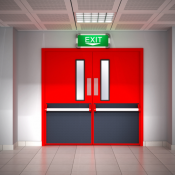
What is LOLER? (Lifting Operations and Lifting Equipment Regulations)
The Lifting Operations and Lifting Equipment Regulations 1998 (commonly referred to as LOLER regulations) are a set of UK regulations designed to ensure that lifting operations are properly planned, supervised, and carried out in a safe manner. These regulations apply to businesses and individuals who own, operate, or control lifting equipment in the workplace.
What does LOLER stand for?
LOLER stands for the Lifting Operations and Lifting Equipment Regulations 1998. It is a statutory instrument in the UK that falls under the Health and Safety at Work etc. Act 1974. These regulations aim to reduce the risk of injury from lifting operations in workplaces.
LOLER Meaning and Scope
LOLER applies to all lifting equipment used at work. This includes any equipment used to lift or lower loads, including accessories used for anchoring, fixing, or supporting such equipment. Typical examples include cranes, hoists, lifts, and forklift trucks.
The regulations are enforced by the Health and Safety Executive (HSE) in the UK.
Who must comply with LOLER?
LOLER places duties on employers, but in practice it also affects landlords, building owners, and facilities managerswho are responsible for premises where lifting equipment is used.
Anyone who owns, operates, or controls lifting equipment must ensure it is:
- Sufficiently strong, stable, and suitable for the intended use.
- Positioned and installed to minimise risks.
- Marked clearly to indicate safe working loads.
- Used safely, by competent people.
- Subject to ongoing thorough examinations and inspections.
LOLER Requirements and Employer Duties
Employers and duty holders must:
- Ensure lifting operations are properly planned by a competent person.
- Supervise lifting operations appropriately.
- Use lifting equipment that is safe, suitable, and regularly maintained.
- Carry out thorough examinations of lifting equipment at specified intervals.
Thorough Examinations under LOLER
Lifting equipment must be thoroughly examined at regular intervals by a competent person. In practice, these examinations are often carried out by insurance companies or their appointed specialists. This is because insurance providers usually require certification for coverage, and many businesses choose to streamline compliance this way.
The frequency of examinations depends on the type and use of the equipment:
- Every 6 months – for lifting equipment used to lift people, such as passenger lifts or mobile elevating work platforms (MEWPs).
- Every 12 months – for lifting equipment used to lift goods only.
There can be anomalies. For example:
- A telehandler used solely for lifting materials would require a 12-month thorough examination.
- If that same telehandler is fitted with a man basket to lift people, the inspection frequency would change to every 6 months.
LOLER vs. PUWER: What’s the difference?
LOLER focuses on the safe use of lifting equipment, while PUWER (Provision and Use of Work Equipment Regulations) covers the general safety of all work equipment.
For instance:
- A passenger lift falls under LOLER.
- An escalator would typically be managed under PUWER.
It’s also important to distinguish between maintenance and inspection:
- Maintenance involves repairing or servicing equipment to ensure it remains in good working order.
- Inspection/thorough examination under LOLER is a legal requirement to ensure the equipment remains safe to use.
LOLER Defect Categories
Following a thorough examination, the competent person will issue a report that may include defects. These are typically categorised as:
- Category A: Equipment is in an unsafe condition and must be taken out of service immediately. These are often reported to the Health and Safety Executive (HSE).
- Category B: Faults that are not immediately dangerous but must be repaired within a specified time (e.g., 14 days). If not addressed, they may escalate to Category A.
- Category C: Minor defects or recommendations for future attention. These are often overlooked, but over time can develop into more serious issues if not addressed.
Understanding these categories helps ensure that corrective actions are prioritised and that equipment remains safe and compliant.
Summary of Key LOLER Inspection Frequencies
| Equipment Type | Use | Frequency |
|---|---|---|
| Passenger lift | Lifting people | 6 months |
| Forklift truck (no man cage) | Lifting goods only | 12 months |
| Telehandler with man basket | Lifting people | 6 months |
| Telehandler (goods only) | Lifting goods | 12 months |
| Hoists used by window cleaners | Lifting people | 6 months |
Final Thoughts
LOLER regulations are not just about compliance—they’re about keeping people safe. Misunderstanding the difference between inspection and maintenance, or ignoring Category C defects, can lead to serious safety breaches over time.
If you’re responsible for lifting equipment, it’s essential to schedule regular thorough examinations, respond appropriately to defect reports, and stay informed about your legal duties.
Need help with LOLER compliance?
If you’re a landlord, building owner, or facilities manager and need support managing your LOLER obligations, submit an enquiry through our Facilities Management service.
We’ll help you find trusted safety consultants and lifting equipment specialists.
Frequently Asked Questions
Is LOLER a legal requirement?
Yes. LOLER is part of UK health and safety law. Employers and duty holders must comply to avoid prosecution and ensure the safety of employees and site users.
Who can carry out a LOLER inspection?
A competent person, often appointed through your insurer, should conduct the thorough examination. They must have the knowledge, experience, and impartiality to assess equipment safety.
Is maintenance the same as LOLER inspection?
No. Maintenance ensures equipment is functioning correctly. LOLER inspections verify safety and legal compliance.
Are escalators covered by LOLER?
No. Escalators are typically managed under PUWER, not LOLER. Lifts that carry people, such as passenger lifts, are covered by LOLER.
What if a defect is found?
Defects are categorised (A, B, or C). Category A defects mean the equipment must be taken out of service immediately. B defects must be fixed in a set time. C defects are advisory but shouldn’t be ignored.
Do landlords or building owners need to follow LOLER?
Yes. If you are responsible for lifting equipment in a property or site, you may have LOLER duties—even if you’re not the direct employer.



